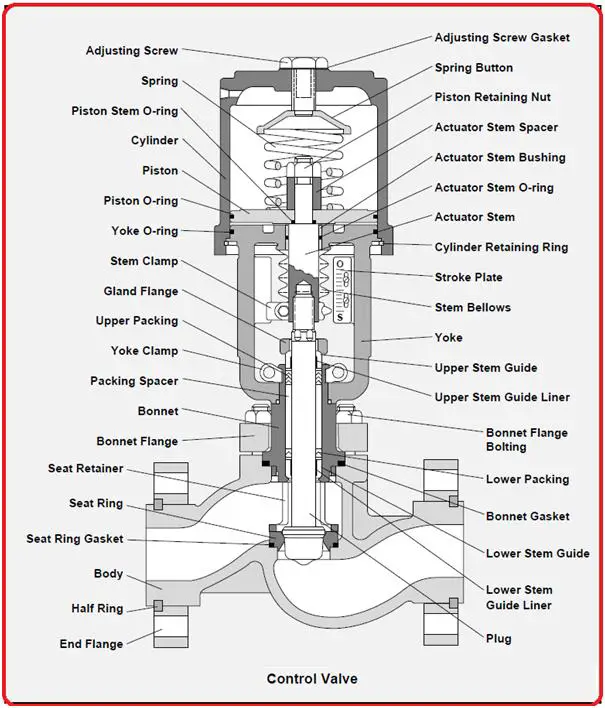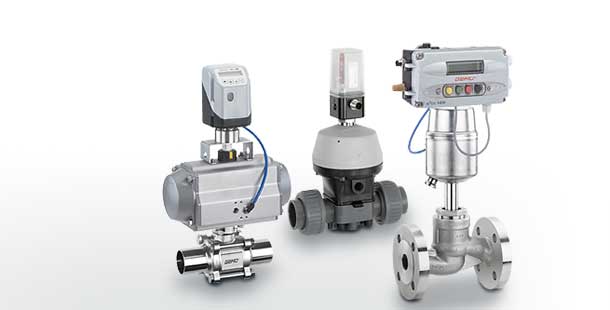Picking the Right Control Valves: A Guide to Optimal System Efficiency
Picking the Right Control Valves: A Guide to Optimal System Efficiency
Blog Article

Maximize Power Financial Savings and Comfort With Advanced Structure Automation Controls
In the realm of modern design and center management, the integration of sophisticated building automation manages stands as an essential advancement. By taking advantage of the power of automation, structures can adjust, respond, and advance in methods that were as soon as inconceivable.
Power Efficiency Advantages
Power efficiency advantages can dramatically minimize energy usage and operational prices in buildings. Energy-efficient systems, such as advanced building automation controls, can maximize the usage of resources like cooling, lighting, and home heating, leading to lower energy expenditures over time.
Additionally, improved energy efficiency can prolong the life-span of structure tools and systems. By operating a lot more effectively, heating and cooling systems, lighting fixture, and various other building parts experience less deterioration, resulting in lowered upkeep and replacement costs. Furthermore, energy-efficient structures commonly regulate higher residential or commercial property worths and rental rates, supplying long-lasting economic advantages to owners.
Furthermore, energy efficiency can improve occupant convenience and efficiency. Effectively controlled interior environments with optimum lighting and thermal conditions develop a more favorable and pleasurable office, resulting in boosted employee complete satisfaction and performance. Generally, the power effectiveness benefits connected with innovative structure automation controls are multifaceted, including price financial savings, environmental stewardship, and resident health.
Improved Comfort Control
Enhancing comfort control in structure atmospheres needs an advanced integration of sophisticated automation systems for optimal passenger health. By utilizing advanced building automation controls, centers can customize the indoor setting to meet the certain needs and choices of occupants. These systems enable accurate policy of ventilation, lights, and temperature, producing a effective and comfortable ambience. Passenger complete satisfaction and performance are very closely linked to thermal comfort, making it necessary to have systems in position that can adjust to transforming conditions in real-time.
By including these innovative controls, buildings can not just enhance comfort but likewise enhance energy efficiency by enhancing system procedures based on actual occupancy and usage patterns. Eventually, prioritizing passenger convenience through advanced automation systems leads to a much more satisfying and much healthier interior setting.
Functional Effectiveness Improvements

Moreover, the execution of real-time monitoring and analytics tools makes it possible for structure drivers to identify energy inefficiencies and operational abnormalities without delay. By continually keeping track of energy usage patterns and system performance metrics, modifications can be made in real-time to enhance energy consumption and guarantee peak functional performance. control valves. Additionally, integrating need reaction approaches into building automation controls can further boost operational performance by dynamically adjusting power use based upon grid conditions and rates signals
Indoor Climate Optimization
Reliable interior environment optimization is a basic facet of structure automation controls, making sure occupants' convenience and wellness while making the most of power financial savings. By using sophisticated sensors and controls, constructing automation systems can constantly change and monitor temperature level, humidity levels, air top quality, and ventilation to produce an optimum indoor setting. Keeping comfy and consistent problems not just improves passenger fulfillment however likewise boosts productivity and total well-being.
Indoor climate optimization also plays a critical role in power performance. By fine-tuning heating, air flow, and air conditioning systems based on real-time information and tenancy patterns, building automation my website controls can significantly decrease power consumption - control valves. Applying strategies such as demand-controlled ventilation and thermal zoning can aid lessen power waste while ensuring that each area of the building gets the needed conditioning.

Sustainable Environment Creation
Structure automation regulates not only maximize interior climate problems for energy effectiveness and resident comfort however likewise lay the foundation for creating a lasting atmosphere with calculated management of systems and sources. By incorporating advanced building automation technologies, such as sensors, actuators, and smart software, facilities can readjust and keep an eye on energy use in real-time to minimize waste and minimize their carbon footprint. These systems enable anticipating maintenance, identifying potential concerns prior to they intensify and optimizing tools efficiency to enhance durability and efficiency.
In addition, lasting atmosphere creation prolongs beyond energy monitoring to encompass water conservation, waste reduction, and interior air quality renovation. Building automation controls can manage water usage, spot leakages, and ensure appropriate waste disposal techniques, adding to general sustainability initiatives. In addition, by controlling and he said keeping track of air flow and filtering systems, these technologies boost occupant health and wellness and efficiency while decreasing energy usage connected with cooling and heating procedures.
Verdict
In final thought, advanced building automation regulates offer considerable advantages in terms of power savings, convenience control, operational efficiency, interior climate optimization, and creating a sustainable setting. By carrying out these controls, structures can achieve optimum performance while minimizing energy intake and improving occupant comfort. It appears that using advanced automation modern technology is vital in improving building efficiency and creating a more sustainable future.
Power efficiency benefits i loved this can significantly minimize energy consumption and functional expenses in buildings. Overall, the energy efficiency benefits connected with sophisticated building automation controls are complex, incorporating price savings, ecological stewardship, and occupant wellness.
Furthermore, incorporating demand response techniques into building automation controls can additionally improve functional performance by dynamically changing energy use based on grid problems and rates signals.
Structure automation controls not only enhance interior environment problems for power effectiveness and occupant comfort however likewise lay the structure for producing a lasting setting with tactical monitoring of sources and systems.In verdict, progressed building automation regulates offer considerable advantages in terms of power cost savings, convenience control, functional effectiveness, interior environment optimization, and developing a lasting atmosphere.
Report this page